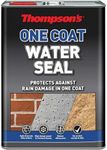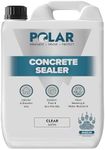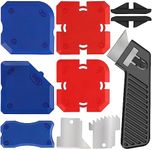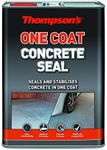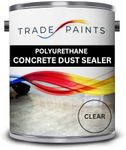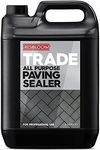Buying Guide for the Best Concrete Sealer
Choosing the right concrete sealer is essential to protect and enhance the appearance of your concrete surfaces. Whether you're sealing a driveway, patio, or garage floor, understanding the different types of sealers and their key specifications will help you make an informed decision. Here are some important factors to consider when selecting a concrete sealer.Type of SealerConcrete sealers come in various types, including acrylic, epoxy, polyurethane, and penetrating sealers. Each type has its own advantages and is suited for different applications. Acrylic sealers are easy to apply and provide a glossy finish, making them ideal for decorative concrete. Epoxy sealers offer strong protection and are great for high-traffic areas. Polyurethane sealers are durable and resistant to chemicals, perfect for industrial settings. Penetrating sealers soak into the concrete and provide long-lasting protection without changing the surface appearance, making them ideal for outdoor use. Choose the type based on the specific needs of your project.
FinishThe finish of a concrete sealer can range from matte to high gloss. A matte finish provides a natural look and is less slippery, making it suitable for outdoor areas like walkways and driveways. A high gloss finish enhances the color and appearance of decorative concrete, making it ideal for indoor spaces like basements and garages. Consider the aesthetic you want to achieve and the location of the concrete surface when selecting the finish.
DurabilityDurability is a crucial factor in choosing a concrete sealer, as it determines how well the sealer will protect the concrete over time. High-quality sealers can withstand heavy traffic, UV exposure, and harsh weather conditions. For outdoor surfaces, look for sealers with UV resistance and weatherproof properties. For indoor surfaces, consider the level of foot traffic and potential exposure to chemicals or moisture. Select a sealer that matches the durability requirements of your specific application.
Application MethodConcrete sealers can be applied using different methods, such as spraying, rolling, or brushing. Spraying is quick and efficient, making it suitable for large areas. Rolling provides a more even coat and is ideal for smaller surfaces. Brushing allows for precise application in tight spaces or intricate designs. Consider the size and complexity of the area you need to seal and choose an application method that will ensure thorough coverage and ease of use.
Drying TimeDrying time varies between different concrete sealers and can affect the overall project timeline. Fast-drying sealers allow you to complete the project quickly, which is beneficial for areas that need to be used soon after application. However, some sealers with longer drying times may offer better durability and protection. Consider your schedule and the urgency of the project when selecting a sealer with an appropriate drying time.
VOC ContentVolatile Organic Compounds (VOCs) are chemicals that can be released into the air during the application of concrete sealers. High VOC content can be harmful to health and the environment. Low-VOC or VOC-free sealers are safer to use, especially in indoor spaces with limited ventilation. If you are concerned about air quality and environmental impact, opt for sealers with low or no VOC content.

